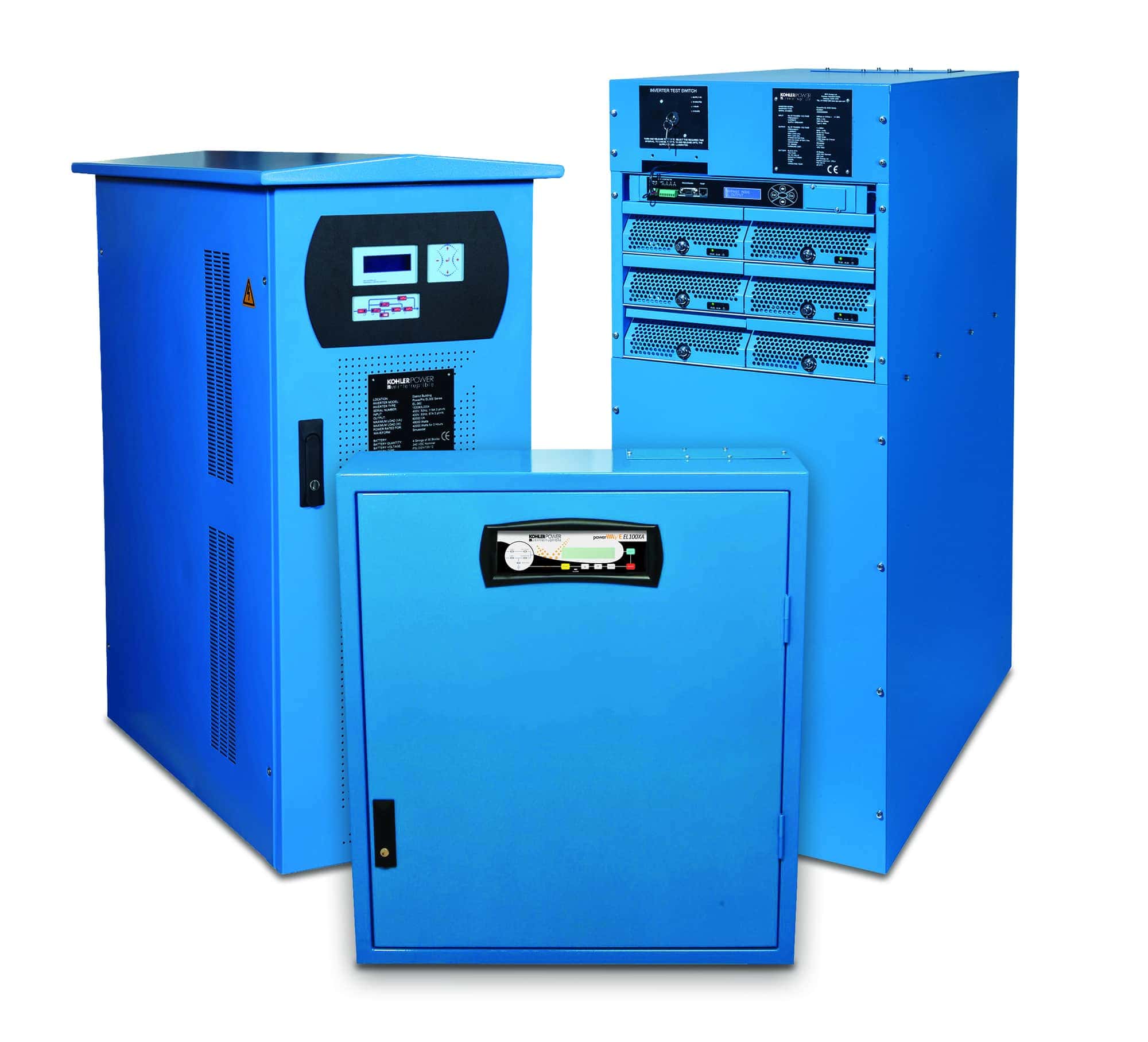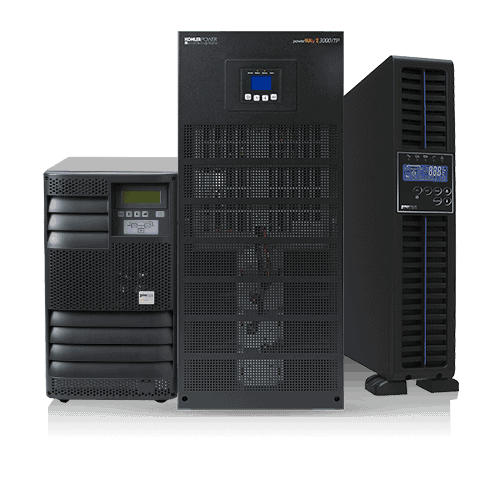With the recent revision to BS 5266-1 Ian Watts, Business Development Manager – UPS Emergency Lighting from KOHLER Uninterruptible Power discusses section 6.9: Possible Annex addition for consideration. Specifically, “Guidance on the sizing of central power systems”
For the AC output control gear, there are many factors that need to be considered when sizing central power systems and here we discuss three of them:
Continuous load for emergency lighting central battery systems
Emergency lighting inverter size (and distribution wiring) should be rated for the VA of the load. This is greater than the central battery system wattage the difference being the power factor. VA x Power factor = Watts
Originally this was typically caused by the voltage and current waveforms being out of phase and could be corrected either individually at the luminaires or by bulk power factor correction.
Now many emergency lighting control gear loads are non-linear loads which normally require the control gear to be oversized to accommodate these loads.
Note pyro. cable fire resistant cable has a high capacitive effect that may have an impact on the central power system.
Also, emergency light inverter output limits of total harmonic distortion (THD) are normally given into a resistive load. It is mainly the load that modifies the central battery system power factor.
Starting surge
Emergency lighting LED light sources can have very high starting surges depending on their driver design. This surge can trip distribution circuit breakers and the inverter switching circuit needs to be designed to provide the surge.
Emergency lighting battery
This is based on the wattage load for central power systems larger than LPS (900w for 3 hours) the battery should have a design life of 10 years. The central battery system should be de-rated to provide the required load at the end of the design life.
Note some control gear provide constant power supply so as the battery voltage decays during discharge the current drawn increases.
Implications of central power system installation mean the emergency lighting system designer needs to check that the equipment is correctly designed for the luminaire load. If during the emergency lighting installation or subsequent luminaire repair the luminaire is changed from the original design. It is essential that the impact of a different luminaire is rechecked by a competent emergency lighting engineer to ensure the central battery system operation is not prejudiced.
To find out more information on guidance for correct sizing of central power systems or if you would like further information about emergency lighting products, please contact Ian Watts on [email protected] or call us on 0800 731 3269.
Author:
Ian Watts has 28 years’ experience, working for a wide range of fire and lighting/central power supply manufacturers. He is the FIA representative for BS 5266 part 1, Vice-Chair for ICEL technical and the newly appointed Convenor of CEN 169 TC working group 3. He lectures for CIBSE, Fire Industry Association and the British Fire Consortium.





